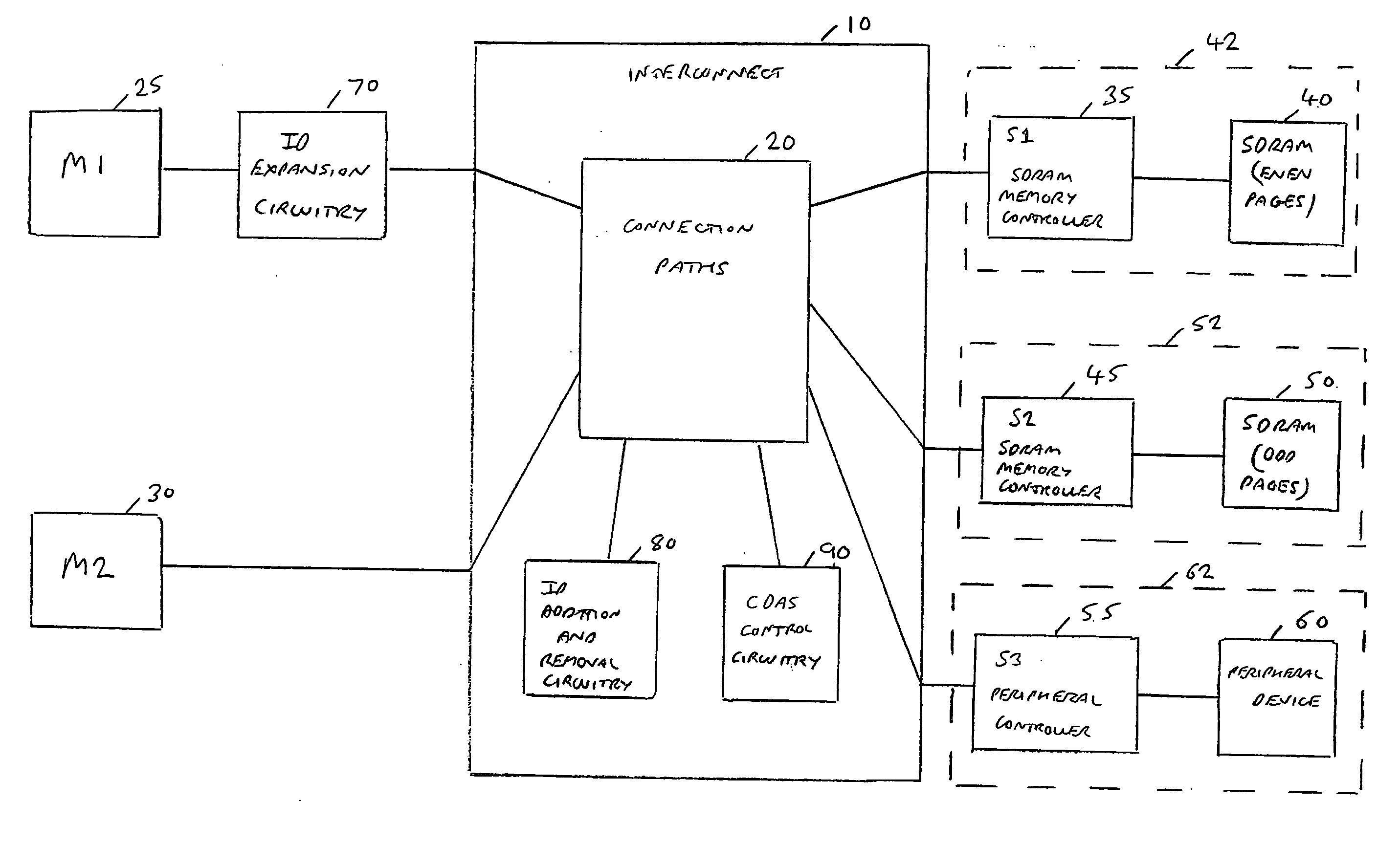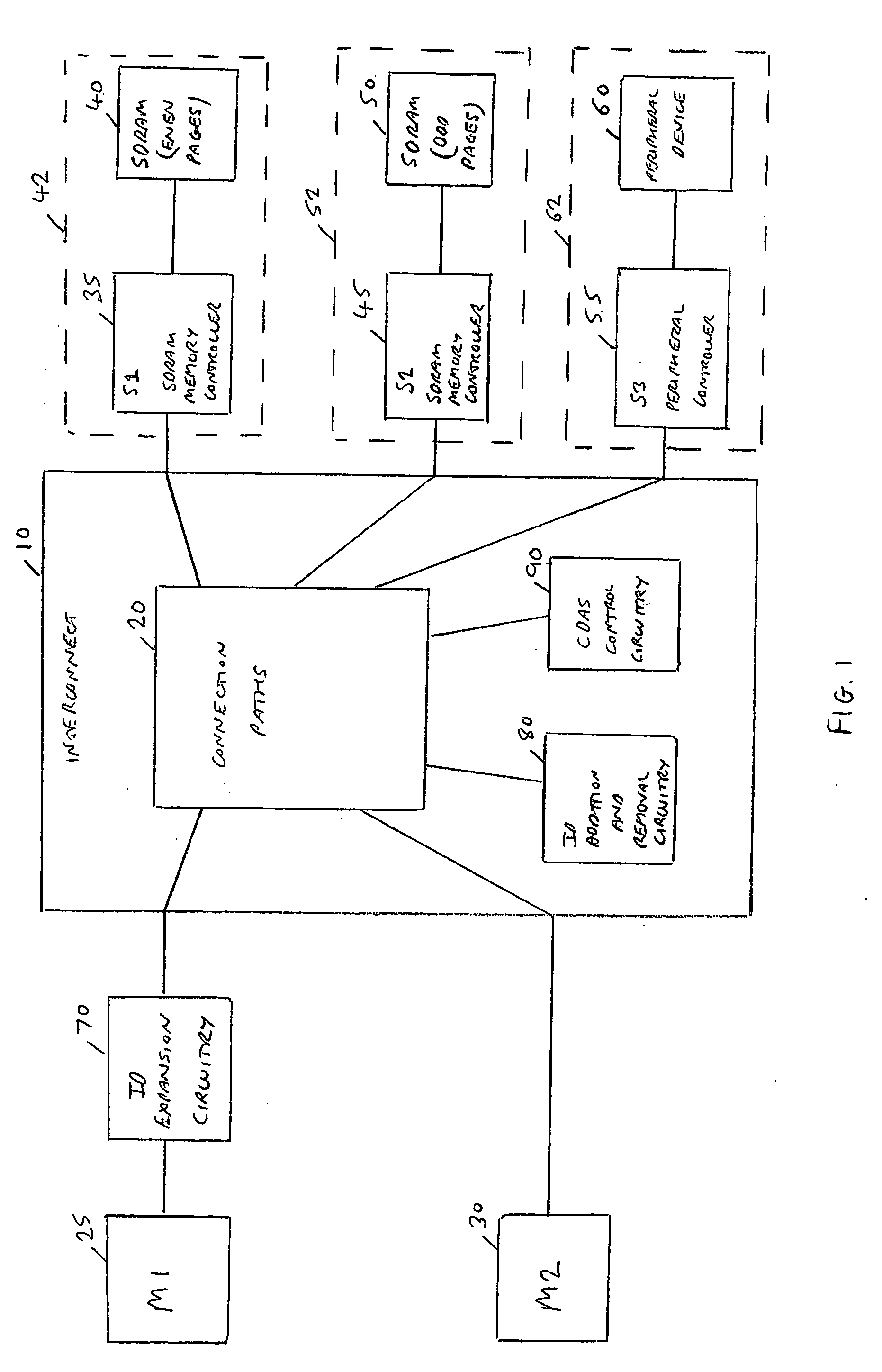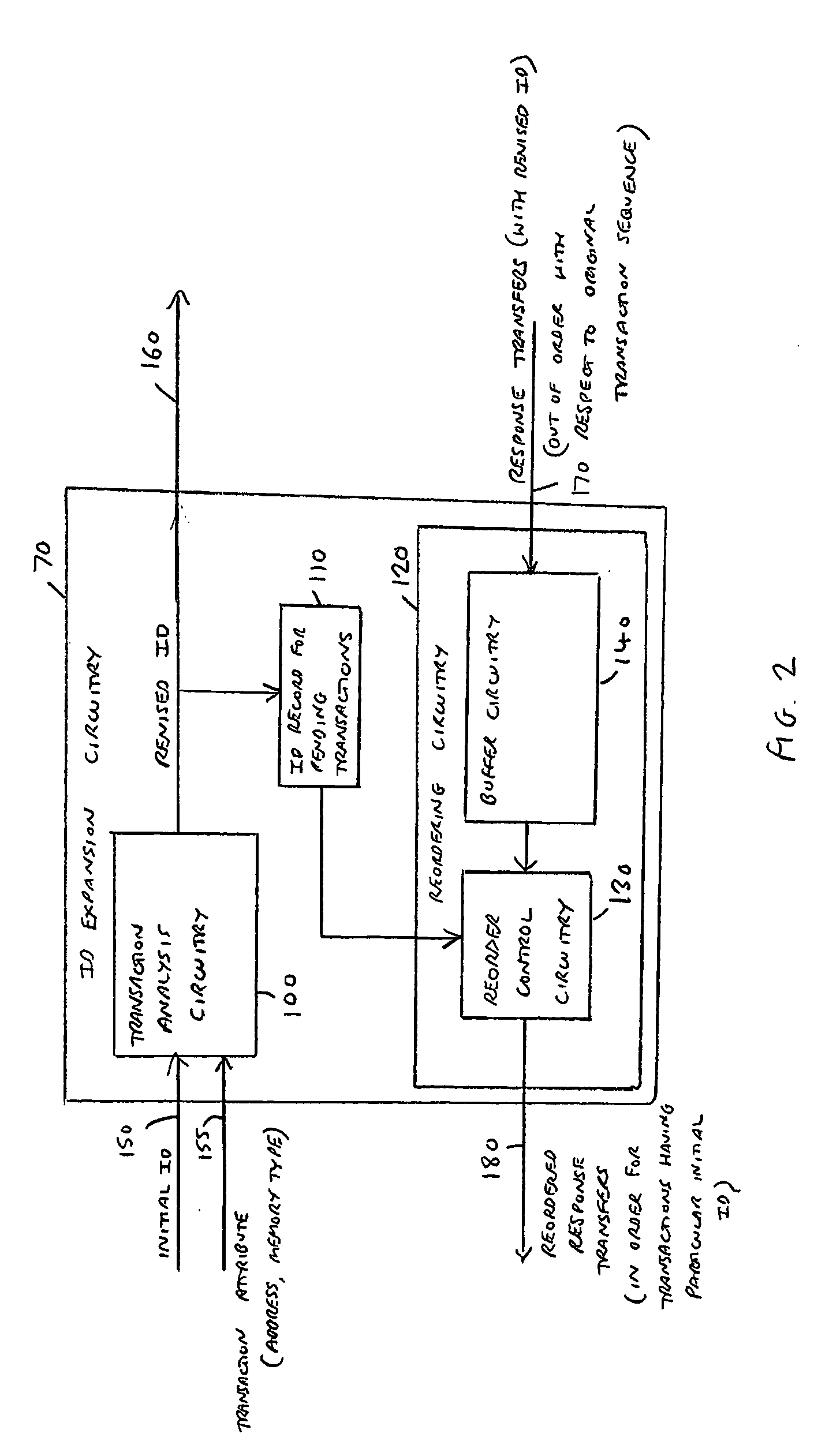Transaction indentifier expansion circuitry and method of operation of such circuitry
- Summary
- Abstract
- Description
- Claims
- Application Information
AI Technical Summary
Benefits of technology
Problems solved by technology
Method used
Image
Examples
Embodiment Construction
[0046]In the embodiments described below, the interconnect circuitry of a data processing apparatus employs a split transaction protocol in which separate address channels and data channels are provided, and the timing of data transfers is decoupled with respect to the timing of address transfers of a particular transaction. In one particular embodiment, the interconnect circuitry operates in accordance with the AXI protocol, and the connection paths of the interconnect circuitry provide five channels, namely a read address channel, a write address channel, a read data channel, a write data channel and a write response channel.
[0047]FIG. 1 is a block diagram of a data processing apparatus incorporating such interconnect circuitry. As shown in FIG. 1, the interconnect circuitry 10 has a number of master devices connected thereto, in this example two master devices M125 and M230, and also has a number of slave devices connected thereto, in this example the slave devices generally repr...
PUM
 Login to View More
Login to View More Abstract
Description
Claims
Application Information
 Login to View More
Login to View More - R&D
- Intellectual Property
- Life Sciences
- Materials
- Tech Scout
- Unparalleled Data Quality
- Higher Quality Content
- 60% Fewer Hallucinations
Browse by: Latest US Patents, China's latest patents, Technical Efficacy Thesaurus, Application Domain, Technology Topic, Popular Technical Reports.
© 2025 PatSnap. All rights reserved.Legal|Privacy policy|Modern Slavery Act Transparency Statement|Sitemap|About US| Contact US: help@patsnap.com



